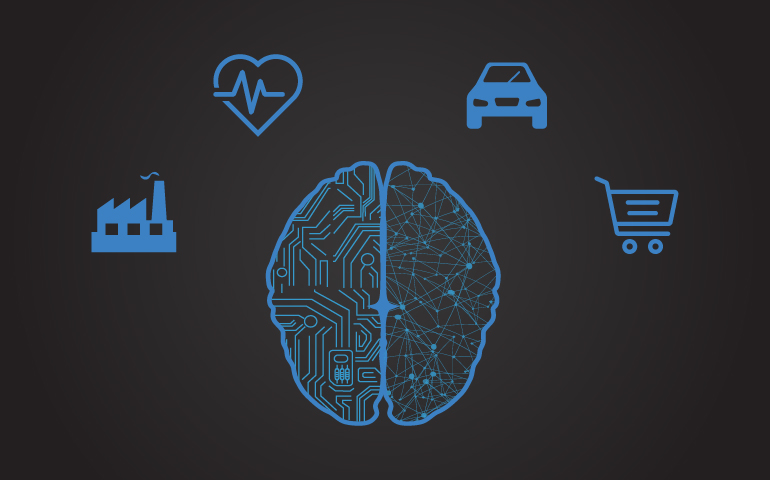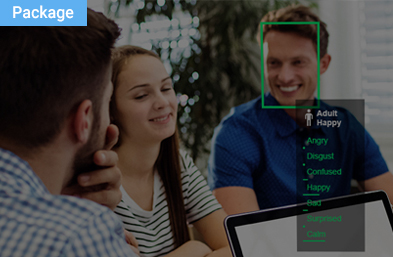

It is efficient for organizations to connect business knowledge with data-guided solutions. Data science enables businesses to derive data-driven decisions. Data, and more importantly analytics, are changing the way we see our machines, our processes and our operations.
The fusion of data science with other technologies would enhance the decision-making approach, making it more eloquent and accurate. Let’s study in brief, how this fusion helps different industry verticals.
Data science and cognitive computing
Applying analytics on datasets helps businesses identify patterns in the data, model behaviors, predict failures, and forecast demand based on a variety of variables that exist in the manufacturing setting.
Cognitive computing extends this analytics approach to expanses that were unreachable by more conventional tools like business intelligence and statistics. Cognitive computing offers the benefits of traditional analytics techniques along with reasoning and predictive analysis.
Key reasons to adopt cognitive computing for any business:
- Implementing this solution results in higher efficiencies
- Perform tasks that require results with utmost accuracy.
How the manufacturing industry can leverage cognitive computing along with data science
To deliver consumers’ demand, production was managed on spreadsheets for decades. But with the increase in digitized data, manufacturing companies needed a more mature approach towards digitization.
As the usage of sensors and measurement systems streams more volume of data, the need to utilize advanced digitized technologies for better decision-making became prominent. This gave a rise to cognitive systems that could access and process data for insight generation.
Data science along with cognitive computing enables a supervisor to assess process or machine performance and receive immediate answers, preventing unplanned downtime. Using deep learning and discovery enables companies to uncover critical patterns that improve predictive maintenance. Applying data science on the data collected from the machines, the supervisor can forecast machine failure way before it occurs and take respective preventive measures. It also allows machine technicians to access historical data in detail including performance, quality and repairs, manuals and bulletins in context, and more. Technicians can become smarter and faster at their jobs with each repair.
The purpose of data science in this case is to enable data-driven business decision-making. However, this does not necessarily mean that the end solutions must compute decisions. The purpose of the derived output is to support decision-making.

Cognitive Services Assessment
There are legacy applications which can be made “smarter” with the help of cognitive technologies. In our four-week program, we will cover how this is possible with a 360-degree assessment and gap analysis.
Data science and natural language processing
Natural language processing (NLP) refers to the ability of a computer to understand human speech as it is spoken or written. NLP helps organizations to translate data into natural language, not standard computer-generated text that is overly technical and difficult to read, but natural human language that can be read by a literate person. Organizations dealing with lots of customer data face the following data-challenges:
- Noisy Data
- Word Ambiguity (words whose meanings are uncertain or doubtful)
- Complex and subtle relations between concepts in text which may be difficult to detect using text analytics/ mining.
NLP helps organizations with labeling and understanding data in a natural and simple form. It can be used to produce a readable summary from a large chunk of text.
Through the tremendous depth of data presented by NLP, businesses will be able to learn about customer habits and tendencies across their entire consumer base. It can help companies measure what their customers are searching online to improve their business model. This data can be applied across numerous facets of the business, from marketing campaigns to sales and promotions and beyond.
How the healthcare industry can leverage benefits of NLP and data science
Leveraging the patient’s historical data, NLP can support clinical decision-making by integrating and synthesizing symptoms, physical findings, and both positive and negative elements within the dataset. From a precise collective of relevant documents, meaningful and actionable summaries, and a dashboard of pertinent findings, NLP has the capacity to speed up discovery and support decisions. NLP with applied data science enables healthcare companies with automatic summarization to produce a precise summary of a patient’s history. And based on the history, further forecasts and treatments can be done in a quicker manner.
The reviews posted by users of medications on social media platforms could also be used for analyzing the usage, dosage and side effects of those drugs. There are umpteen numbers of use cases where text analytics has proved to be helpful in obtaining and quantifying insights that were previously unavailable. Using NLP and data science, one can avoid consumption of particular types of drugs that cause adverse side effects. Moreover, it can also enable healthcare companies to forecast the number of incoming patients during an outbreak of a disease.
Data science and chatbots
Chatbots could save businesses up to $8 billion per year across industries. – Juniper Research
Businesses are bringing deep-learning techniques to text analytics. The prime focus is to improve adaptability, reduce maintenance, and improve accuracy.
Then, instead of having a shallow insight of your data, which is often the case for applications focusing only on data visualization, you can – with your chabot, and the right frontend and backend analytics System also immediately explore any detail or facet of your data that is critical for the business.
How the automotive industry can implement data science and chatbots for improving dealership
Chatbot is a customer facing assistant representing your brand. Customers talk to the assistant with ease and share information too. It is easier to ask for the exact information you want like location, preference, etc. Moreover, it is also easier to make sense of the answers, which also come back to you in a casual language that you use every day.
A chatbot gathers the data of people it carries conversations with. Businesses can utilize that data further for sentiment analysis and provide personalized recommendations. By analyzing the geographic regions of customers, organizations would get the benefit to channel their branding and marketing efforts. By further applying data science on the collated datasets gathered by the chatbot, businesses can forecast the demand and sales at various dealership locations.
Data science and LoT (location of things)
The location of things market size is estimated to be USD 5.46 Billion in 2017, and is projected to reach USD 27.22 Billion by 2022, at a CAGR of 37.9% from 2017 to 2022. – Marketsandmarkets
The key factors that are driving the growth of the location of things market include increasing importance of spatial data and increased adoption of IoT and location-based applications across various verticals. We are moving to a world (at a fast pace) where every person, place, and thing will be geo-tagged in real-time.
IoT analytics will become a specialized category and discipline for data science. The need to develop such analytical capabilities that supply information while protecting the privacy of individuals will grow over the next few years. Deep machine learning technologies are showing great potential in deducing relationship between LoT and data science.
How data science and LoT can empower the retail industry
By implementing location-based technology, retailers can find ways to maximize product distribution and come up with cross-sell and up-sell opportunities and also reduce costs of selling new products and improving customer relationships.
Applying data science on the varying datasets, organizations can export sales data for customers in a particular location, and then append demographic data to assess market potential. By knowing where the customers are concentrated and where to find more like them businesses can get an understanding of potential for the market in total.
Retailers can build sales models by understanding the size of the market and the growth based on population projections for a definite location.
Using LoT and data science, retailers can also create a more strategic approach for expansion and know their highest-performing stores in the network. Enhancing analytics with location data would enable the retailers to get a clear idea on their sales and promotional channels, the impact of a particular store on sales to current and new customers, and trends over time.
A broader aspect of data science
Our data experts find this amalgamation of data science with such technologies helpful for businesses to understand how others perceive their products and services. Analysis of unstructured data allows organizations to uncover the sentiments of their customers and even segment those in different geographical locations or among different demographic groups.
To know more about how these technologies add value to your business, talk to our experts.
AI Workshop
Envision how your AI Journey can be in next 1-3 years from adoption and acceleration perspective.
Enroll NowNeed Help ?
We are here for you